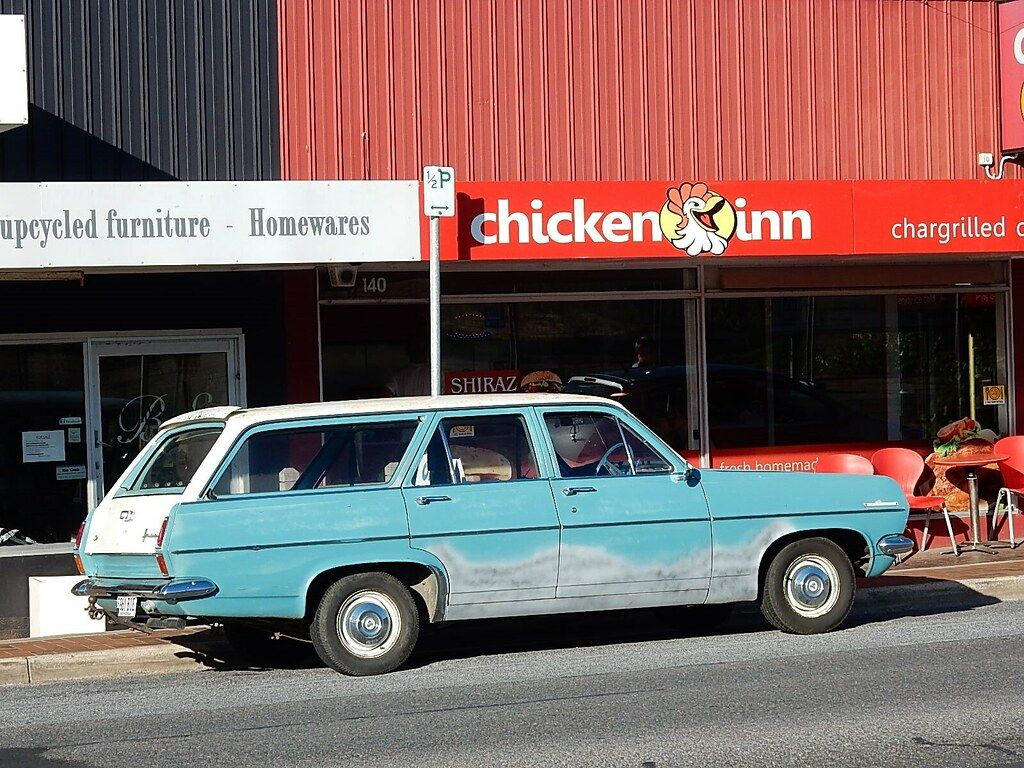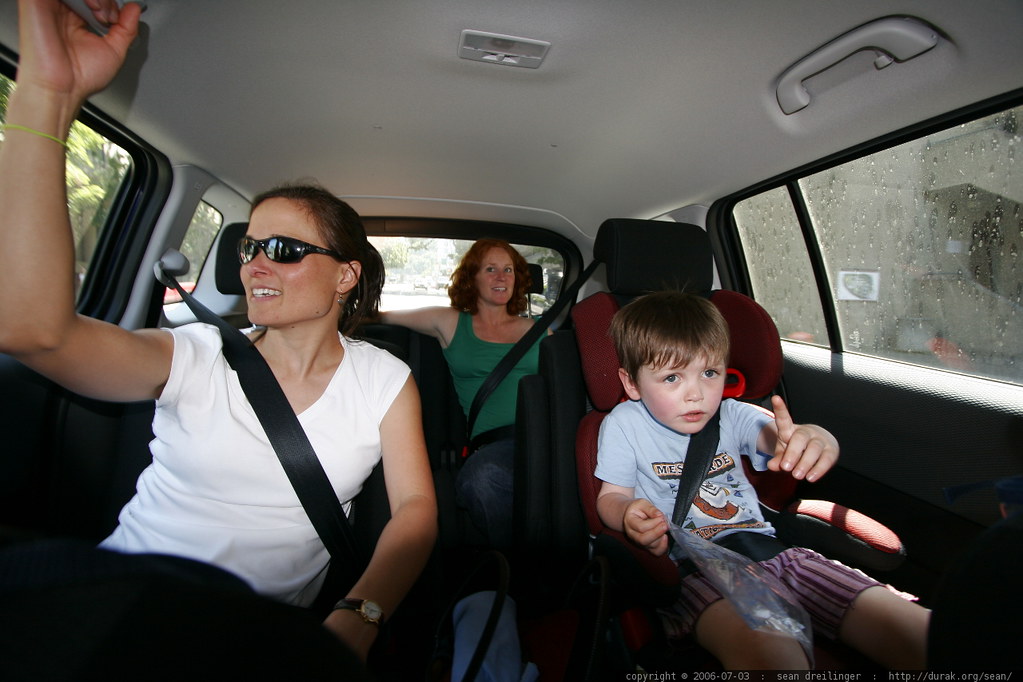
Being a parent, let’s be honest, is a monumental task. The sheer volume of decisions, the endless responsibilities, and the constant balancing act of keeping everyone safe and sound – it’s enough to make even the most seasoned adult long for a quiet moment. When it comes to family transportation, the options are plentiful, but for many new families, the minivan consistently emerges as a popular choice. And yet, there’s often a deep-seated apprehension, a pervasive sense of “regret” that seems to cling to the very idea of owning one.
Ah, the minivan. The ultimate symbol of parental surrender, isn’t it? The vehicle that whispers, “Welcome to the club, your ‘cool factor’ membership has been revoked.” We’ve all heard the whispers, the groans, the declarations of “I vowed I would NEVER own a minivan.” It’s an internal struggle as old as the automatic sliding door itself. One parent perfectly encapsulated this sentiment, musing, “What could be more depressing than turning in my ‘hot mom’ card for the least sexy vehicle on the planet?” But what if those bumper-to-bumper regrets aren’t quite what they seem? What if the narrative we’ve all been sold about these family haulers is just a pile of worn-out stereotypes?
Get ready, because we’re about to put some common minivan myths under the microscope. We’re talking about those nagging worries that haunt new parents, the very reasons many believe they’ll ‘regret’ buying one. From the supposed fuel-guzzling habits to the urban legend of their unwieldy handling, and even the often-cited lack of all-wheel drive, we’re going to dive deep into these perceptions. Spoiler alert: the reality might just surprise you, leading to a different kind of regret entirely – the regret of not seeing the light sooner. Let’s peel back the layers of shame and see what’s really under the hood of these family champions.
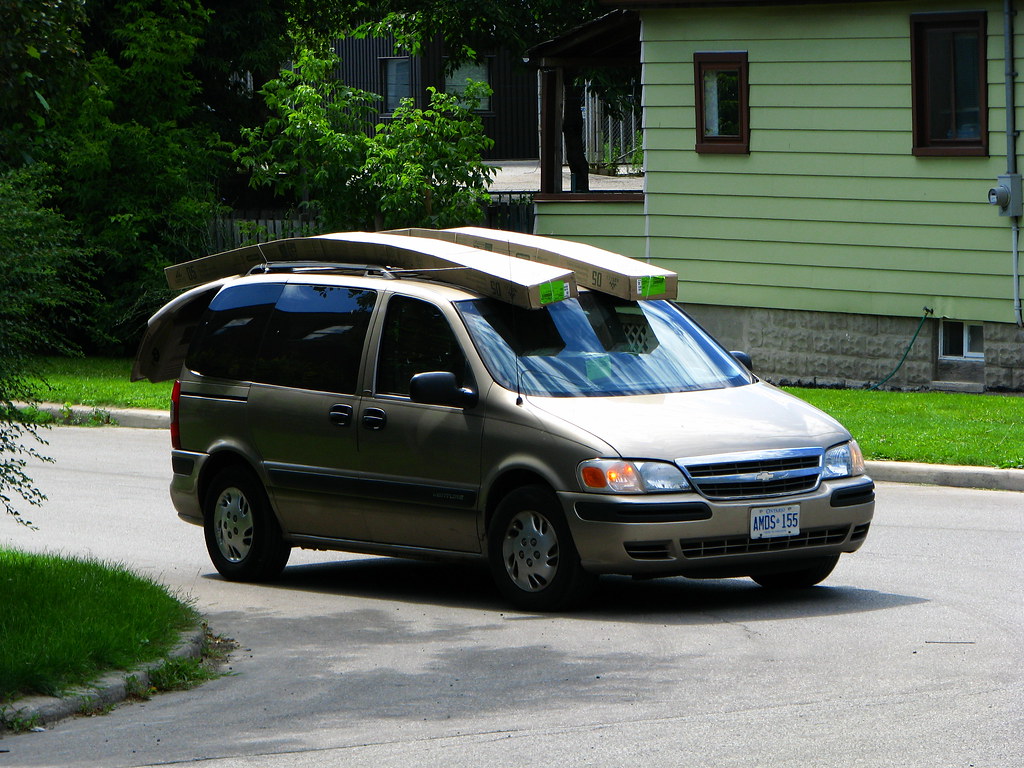
1. **Poor Gas Mileage & High Running Costs**
Let’s kick things off with the granddaddy of all minivan fears: the dreaded fuel economy. You hear it constantly, right? “Oh, a minivan? Say goodbye to your gas budget!” It’s a common refrain among parents, especially those “living paycheck to paycheck,” as the social media group Beyond the Bump points out. The notion is that these hulking family machines guzzle fuel like a thirsty camel, leaving your bank account as dry as a desert mirage. It’s enough to make any new parent – already swimming in baby expenses – second-guess their priorities, isn’t it? The thought of a vehicle that’s “usually not great” in the fuel economy department, even if not “terrible,” is a genuine concern, and a significant contributor to that initial bumper-to-bumper regret.
But hold your horses, because this is where the plot thickens. While older models might have earned that reputation, the landscape of modern minivans has shifted, offering a surprisingly compelling case for efficiency. Take a look at the hard numbers, because we love numbers here at Jalopnik. Compare a 2016 Honda Odyssey to a 2016 Chevrolet Traverse, both popular people haulers. Both seat up to eight passengers, both start in the low $30,000 range, and both pack a V-6 engine. Yet, the Odyssey pulls ahead in the fuel economy department, delivering an EPA-estimated 19/28 mpg city/highway. The Traverse, on the other hand, trails with 15/22 mpg. That’s a noticeable difference, folks, proving that “minivans make dollars and sense.”
Now, let’s talk about the real-world implications of those numbers. That superior fuel efficiency isn’t just a fun fact for trivia night; it translates directly into tangible savings. The Honda’s impressive 462-mile range, compared to the Chevrolet’s 396 miles, means you’re spending less time at the gas pump and more time, well, doing literally anything else. For a parent, those fewer fill-ups are a godsend when you’re racing home, trying to get little Timmy to bed before he turns into a gremlin. One parent even boasted an “extraordinary” $186 savings a month on their gas bill compared to their previous SUV. Think about what that kind of cash could do for your family budget. That’s not regret; that’s a shrewd financial decision.
So, when you look at the total cost of ownership, including the initial price and the ongoing fuel expenses, minivans often present a compelling value proposition that belies their “gas guzzler” stereotype. It’s about more than just the sticker price; it’s about the consistent savings that add up over the years. This reframes the initial financial anxiety not as a regret, but as a potential win. The money saved on gas can easily offset other costs, making that minivan purchase look less like a sacrifice and more like a brilliant budgetary move. Forget buyer’s remorse; this is more like buyer’s delight for your wallet.
Read more about: Regret in Every Lane: 12 Rides Drivers Admit They’d “Unbuy” in a Flash, Ranked by Real-World Woes

2. **Awkward Handling & Huge Turn Radius**
Next up in our lineup of parental minivan grievances is the classic complaint about maneuverability, or rather, the perceived *lack* thereof. “Minivans have a huge turn radius!” “They’re impossible to park!” These cries echo through the digital halls of parent forums, and for good reason. The context acknowledges that “minivans are large, and that comes with some negatives too.” There’s no denying that “all minivans are going to be very long, and that means that making turns with it can be more difficult than making turns with a smaller car.” It’s a legitimate concern for anyone navigating tight parking lots, school drop-off lines, or crowded city streets. The image of wrestling a land yacht into a compact space certainly contributes to the initial “bumper-to-bumper regret” mentality.
Let’s be honest, no one is buying a minivan for its autocross capabilities. If you want to carve corners, go get a sports car. But the idea that a minivan is some kind of undrivable behemoth is, frankly, a bit overblown. Yes, they’re longer than most other car body types on the road, that’s a fact. But humans are remarkably adaptable creatures, and parents are arguably the most adaptable of all. It doesn’t take long to adjust to the dimensions of a minivan. The initial apprehension quickly gives way to a spatial awareness that makes navigating these vehicles second nature. It’s a learning curve, sure, but one that’s far from insurmountable and quickly becomes part of the daily routine for millions of drivers.
Furthermore, what parents often forget in their initial regret over size is *why* the minivan is so long in the first place: space. Glorious, abundant space. That extra length translates directly into generous cargo capacity and the ability to comfortably seat a large family. We’re talking about the kind of interior room that makes even the most demanding family outings manageable. An SUV might *feel* smaller or more agile, but you’re sacrificing that precious interior real estate. The context reminds us that “minivans are almost always going to be larger than an SUV.” So, while you might initially regret the extra effort in a three-point turn, you’ll be thanking that length when you’re hauling a soccer team and all their gear, or an entire week’s worth of groceries without playing Tetris to fit everything in.
And let’s not forget modern technology. While the context doesn’t explicitly mention advanced parking aids as a direct *counter* to turn radius, it does highlight features like “the back up camera” as a reason a parent changed their mind about regret. These tools make maneuvering a large vehicle significantly less stressful, turning a potential struggle into a minor inconvenience. Ultimately, the “huge turn radius” is a trade-off for unparalleled practicality and passenger comfort. It’s a minor hurdle that quickly fades into the background when weighed against the sheer utility and family-friendly design that minivans offer. The real regret isn’t about the car’s turning circle; it’s about the initial inability to see past that one minor drawback to the immense benefits it brings.

3. **Lack of All-Wheel Drive**
Alright, let’s talk about the next big one that sends shivers down the spines of many an intrepid parent: the perceived lack of all-wheel drive. For those who live where winter bites hard, or whose adventures occasionally take them off the paved path, the declaration that “most minivans don’t have all-wheel drive” is a genuine point of “bumper-to-bumper regret.” The context rightly points out that this “will be problematic for some parents,” especially when comparing it to the “average SUV, which usually can have all-wheel drive.” The idea that your family hauler might struggle “traveling through the countryside” or navigating snowy driveways certainly doesn’t inspire confidence, does it? It feeds into the narrative that minivans are somehow less capable, less adventurous, and thus, a regrettable choice for a family that needs a versatile ride.
For a long time, this was a perfectly valid critique, and one that absolutely contributed to minivan-shame. Many families *do* need the added traction and confidence that all-wheel drive provides, whether it’s for navigating a muddy access road to a campsite or simply making it to soccer practice through an unexpected blizzard. The initial assumption that minivans were strictly front-wheel drive machines, relegating them to fair-weather suburban duty, fueled a legitimate sense of regret for those with more challenging driving conditions. It felt like a compromise, a forced choice between utility and capability, and nobody likes making that kind of sacrifice, especially when it comes to family safety and peace of mind.
But here’s where we throw a wrench in that old narrative: the automotive industry, in its infinite wisdom and response to consumer demand, has started to change the game. The context explicitly states, “That said, newer minivans, such as the Chrysler Pacifica, do have all-wheel drive as an option.” Read that again. An *option*. This is a significant development, transforming what was once a common source of regret into an increasingly outdated concern. No longer is AWD exclusive to the SUV brigade; minivans are stepping up to the plate, offering the same all-weather confidence without forcing you into a vehicle that might not meet your other crucial family needs, like unparalleled interior space and thoughtful design.
This isn’t just a minor technicality; it’s a fundamental shift that eradicates one of the most persistent reasons for minivan apprehension. For parents who hesitated, envisioning themselves stuck in the snow while their SUV-driving neighbors glided by, this news is a revelation. It means the minivan can truly be a year-round, all-terrain family champion, equipped to handle more than just pristine asphalt. It’s a testament to how minivans are constantly evolving, shedding their outdated limitations and embracing the features that modern families truly need. The regret isn’t about the lack of AWD in minivans anymore; it’s about not realizing that this hurdle has largely been overcome, leaving you free to choose based on what truly matters to your family, not on outdated prejudices.
Product on Amazon: TOPEC 10PCS Deep Lug Nut Remover Heavy Duty, 1/2″ Drive Impact Wheel Lock Removal Kit, Spiral Type Lug Nut Removal Tool for Removing Stripped, Broken, Damaged, Rounded Bolts, Nuts & Screws
Brand: Topec
Binding: Product Group: Tools
Price: 45.97 USD
Rating: 3.8 Total reviews: 93
Item Length: 0.5 Inches
Material: Chrome Molybdenum Steel
Finish Type: Powder Coated
Number of Pieces: 10
Features:
1. 【Professional Grade Material】Spiral Type Deep lug nut remover are made of high carbon steel (chrome molybdenum) for durability and long life. They are easily removed Damaged bolts, nuts and screws are stripped, rusted, rounded or frozen.
2. 【Laser Metric and Imperial Scales】10 piece spiral deep extractor set sizes 14mm, 16 mm, 17mm, 19mm, 21mm, 22mm, 24mm, 27mm. 1 x extractor bar and 1 /2″ hex adapter for a wide range of working applications.
3. 【Wide Range of Application】The drive end is hexagonal and can be used with flat wrenches, pliers, adjustable wrenches, sockets or vise locking pliers. 1 /2″ hex adapters for use with pneumatic, electric tools. For use with impact bits. Also comes with storage case for easy access and portability.
4. 【Premium Service】If you have any problems with our products, please contact our professional after-sales service team via Amazon mail. the TOPEC after-sales team will contact you and solve your problem at the first time.
Shopping on Amazon >>
Read more about: 15 Vehicles Owners Wish They’d Never Bought: Your Essential Guide to Avoiding Automotive Regrets
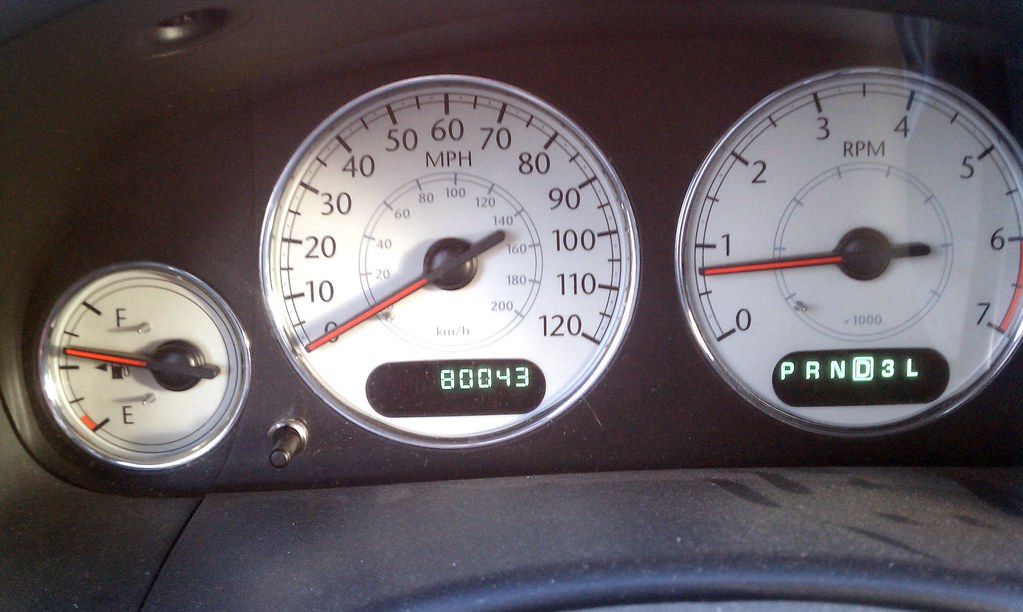
4. **Minivans Aren’t Terribly Slow Anymore**
Let’s face it, when you picture a minivan, “speed demon” probably isn’t the first image that springs to mind. More often, it’s a mental snapshot of a lumbering, traffic-clogging behemoth, a vehicle that exists solely to ferry tiny humans and their endless accouterments from point A to painfully slow point B. This perception, dear readers, is a significant contributor to that lingering “bumper-to-bumper regret.” Who wants to feel like they’re driving a glorified tortoise when everyone else is zipping around? The idea that trading in your “hot mom” card means also trading in any semblance of automotive zest is a bitter pill to swallow for many.
But here’s where the narrative takes a delightful detour, because the truth about modern minivans might just surprise you. We’ve all been conditioned to believe that these family haulers are utterly devoid of any pep, but let’s look at some real-world numbers, shall we? Take, for instance, a 2015 Honda Odyssey Elite that was put through its paces. It managed to sprint from 0 to 60 mph in a very respectable 7.9 seconds and crossed the quarter-mile mark in 16.1 seconds at 87.1 mph. Now, think about that for a second. That’s not exactly going to win you any drag races, but it’s certainly not sluggish.
To put that into perspective, consider a car that, by all accounts, *looks* sporty: a 2014 Lexus IS 250. This luxury sedan, designed to evoke a sense of dynamism and agility, hits 60 mph in 7.2 seconds and finishes a quarter-mile in 15.6 seconds. Do the math, folks. We’re talking about a mere half-second difference separating an eight-passenger, kid-hauling family machine from a sleek, four-door luxury sedan. That’s not just a marginal improvement; it’s a monumental shift in what we should expect from a minivan’s performance. The perception of slowness is increasingly just that: a perception, rooted in outdated models and biases.
What does this mean for your daily grind, beyond mere bragging rights at the PTA meeting? It means confident merging onto busy highways, the ability to pass slower traffic without white-knuckling the steering wheel, and a general feeling of capability behind the wheel. You’re not just plodding along; you’re moving with purpose. This surprising level of responsiveness drastically reduces the feeling of being bogged down by your family chariot, transforming a potential source of regret – the feeling of driving a perpetually underpowered appliance – into a quiet satisfaction, knowing your minivan can handle whatever the road (and your schedule) throws at it. So, the next time someone sniffs about minivans being slow, you can hit them with the facts: modern minivans aren’t just competent, they’re surprisingly spry, dispelling another layer of minivan-shame.
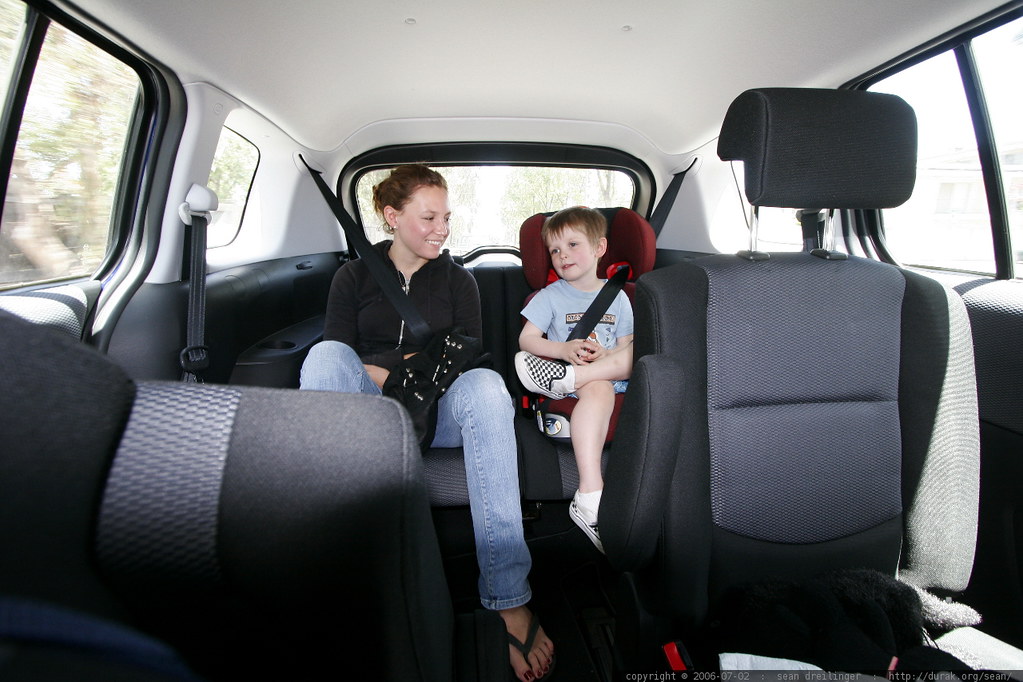
5. **There’s Room for Regular Humans in All Three Rows**
Ah, the third row. In many “family-friendly” SUVs, it’s less a seating area and more a designated time-out zone, fit only for small, bendy children or the truly desperate. We’ve all seen them: third rows so cramped they make a sardine can look spacious, with legroom measurements that seem to be calculated for garden gnomes. “Ever sat in the third row of a Mitsubishi Outlander?” the context pointedly asks, adding, “Me neither. Couldn’t fit. It seems like they design these things for petulant children in need of a time-out.” This is precisely why many parents face disappointment, if not outright regret, when they realize their SUV’s promised capacity is a cruel joke for anyone over four feet tall.
This is where minivans don’t just shine; they absolutely dominate. While SUVs might often compromise on third-row space to maintain a more “sporty” or compact exterior, minivans embrace their length, dedicating it to one glorious purpose: legitimate, human-sized passenger comfort across all three rows. Let’s compare apples to apples, or rather, minivans to SUVs. A 2016 Mitsubishi Outlander, a popular SUV, offers a meager 28.2 inches of legroom in its third row. Now, brace yourselves, because a 2016 Honda Odyssey’s third row, on the other hand, boasts a whopping 42.4 inches of legroom. “You decide,” indeed. The difference is stark, undeniable, and a game-changer for any family.
What does 42.4 inches of legroom actually *mean* in the real world? It means teenagers aren’t complaining about their knees being surgically fused to their chins. It means adult friends or grandparents can comfortably join the carpool without feeling like they’ve been stuffed into a luggage compartment. It means long road trips become less of a wrestling match and more of a pleasant journey, with everyone having enough personal space to relax, stretch out, and perhaps even enjoy the ride. This isn’t just about fitting bodies; it’s about accommodating actual comfort and reducing the inevitable “Are we there yet?” complaints that stem from discomfort.
For growing families, or those with frequent carpool duties, this expansive third-row capability is nothing short of a revelation. You can genuinely utilize every single seat without feeling guilty about condemning someone to the back, which eliminates a huge source of stress and ensures that your vehicle truly serves its purpose as a family hauler, not just a partial one. The initial regret parents might feel about getting a ‘less cool’ minivan quickly evaporates when they witness the sheer utility and comfort it provides for everyone on board, from the littlest passenger to the tallest. This isn’t about marketing fluff; it’s about engineering that prioritizes people over perceived sportiness, making the minivan often the *only* sensible choice for real-world family needs.
Car Model Information: 2024 Mitsubishi Outlander ES
Name: Mitsubishi Outlander
Caption: 2022 Mitsubishi Outlander SE
Manufacturer: Mitsubishi Motors
Aka: ubl
Production: 2001–present
Class: Mid-size crossover SUV
BodyStyle: Sport utility vehicle
Layout: ubl
Categories: 2010s cars, 2020s cars, All-wheel-drive vehicles, All articles containing potentially dated statements, All articles with dead external links
Summary: The Mitsubishi Outlander (Japanese: 三菱・アウトランダー, Hepburn: Mitsubishi Autorandā) is a mid-size crossover SUV manufactured by Japanese automaker Mitsubishi Motors since 2001. It was originally known as the Mitsubishi Airtrek (Japanese: 三菱・エアトレック, Hepburn: Mitsubishi Eatorekku) when it was introduced in Japan.
The original Airtrek name was chosen to “describe the vehicle’s ability to transport its passengers on adventure-packed journeys in a ‘free-as-a-bird’ manner”, and was “coined from Air and Trek to express the idea of footloose, adventure-filled motoring pleasure.” The Outlander nameplate which replaced it evoked a “feeling of journeying to distant, unexplored lands in search of adventure.”
The second generation of the vehicle was introduced in 2006 and all markets including Japan adopted the Outlander name, although production of the older version continued in parallel. It was built on the company’s GS platform, and used various engines developed by Mitsubishi, Volkswagen, and PSA Peugeot Citroën. PSA’s Citroën C-Crosser and Peugeot 4007, which were manufactured by Mitsubishi in Japan, are badge engineered versions of the second generation Outlander. Global sales achieved the 1.5 million unit milestone in October 2016, 15 years after its market launch.
As part of the third generation line-up, Mitsubishi launched in January 2013 a plug-in hybrid model called Outlander PHEV. As of January 2022, global sales totaled about 300,000 units.
The fourth-generation model was released in 2021 as a 2022 model. Following Mitsubishi’s entry to Renault–Nissan–Mitsubishi Alliance, the fourth-generation Outlander is based on the Rogue/X-Trail, which is built on the CMF-CD platform.
Get more information about: Mitsubishi Outlander
Buying a high-performing used car >>>
Brand: Mitsubishi Model: Outlander
Price: $21,237 Mileage: 58,662 mi.
Read more about: America’s Beloved Companions: The AKC’s Top Dog Breeds (Spoiler: #1 Might Surprise You)
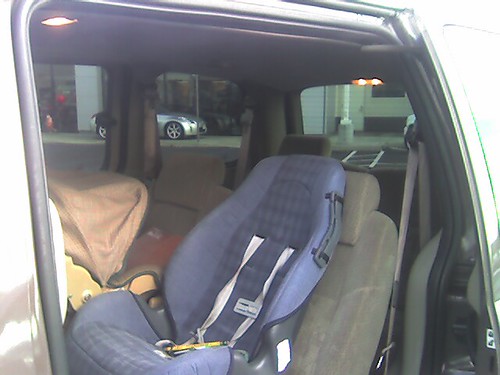
6. **They Have Automatic Sliding Doors**
Alright, parents, let’s be honest. How many times have you approached your car, arms laden with groceries, a diaper bag, and a toddler threatening a full meltdown, only to perform an Olympic-level feat of contortion just to open the back door? Or worse, how often has a child flung open a heavy door into an adjacent car, leaving a dent and a rapidly draining bank account? This is a prime example of the daily, often unnoticed, frustrations that contribute to a lingering sense of parental dread and, yes, that “bumper-to-bumper regret.” The simple act of getting in and out of the vehicle shouldn’t feel like a high-stakes puzzle, should it?
Now, let’s talk about a feature that seems almost too simple, yet is utterly transformative: automatic sliding doors. Think about it. The context even puts it in illustrious company, mentioning “the nifty falcon-wing doors of the new Tesla Model X SUV” and the luxurious Rolls-Royce Dawn, both of which “go out of their ways to open and close the doors for you.” The humble minivan, often scoffed at, offers a comparable level of seamless convenience, just without the eye-watering price tag or the occasional “will it actually open?” drama of those exotic options. This isn’t just a quirky feature; it’s a testament to thoughtful engineering prioritizing utility above all else.
Imagine this scenario, plucked straight from the pages of real-parent experience: “when you drop into the driver’s seat of a minivan, exhausted, and realize you’ve left not only the tailgate wide open but also both rear doors, there’s little that’s as wonderful as reaching an arm up, pressing a button, and having everything close on its own.” That, my friends, is not just convenience; it’s a moment of pure, unadulterated bliss. It’s the kind of feature that speaks directly to the harried parent, the one who’s constantly juggling a dozen things at once and desperately needs a break. No more struggling, no more nagging, just effortless entry and exit.
Beyond the sheer ease, there’s a significant safety and practical advantage. Automatic sliding doors eliminate the risk of children carelessly swinging open heavy doors into other vehicles, parking lot poles, or even passing pedestrians. They also allow for much easier access in tight parking spots, as the doors slide parallel to the vehicle, rather than swinging outwards. This means less stress about dings and dents, and more peace of mind when navigating crowded environments. So, while some might snicker at the ‘uncool’ image of a minivan, those automatic sliding doors are a silent declaration of victory for parents everywhere, reducing daily friction and proving that sometimes, the simplest innovations deliver the greatest impact.
Product on Amazon: OlideSmart Automatic Residential Sliding Door Window Operator with RFID Smart Pet Tag
Brand: OlideSmart
Binding: Product Group: Home Improvement
Price: 369.99 USD
Material: Metal, Plastic
Color: White
Product Dimensions: 70″L x 4″W x 4″H
Installation Type: Self-Adhesive
Features:
1. Easy to install, just need to attach the track in the same way as an adjustable telescopic rod on a window/or door frame.
2. Operate the motor by APP
3. Compatible with Amazon Alexa and Google Home
4. A good choice for seniors and people with physical disabilities.
Shopping on Amazon >>
Read more about: 15 Vehicles Owners Wish They’d Never Bought: Your Essential Guide to Avoiding Automotive Regrets
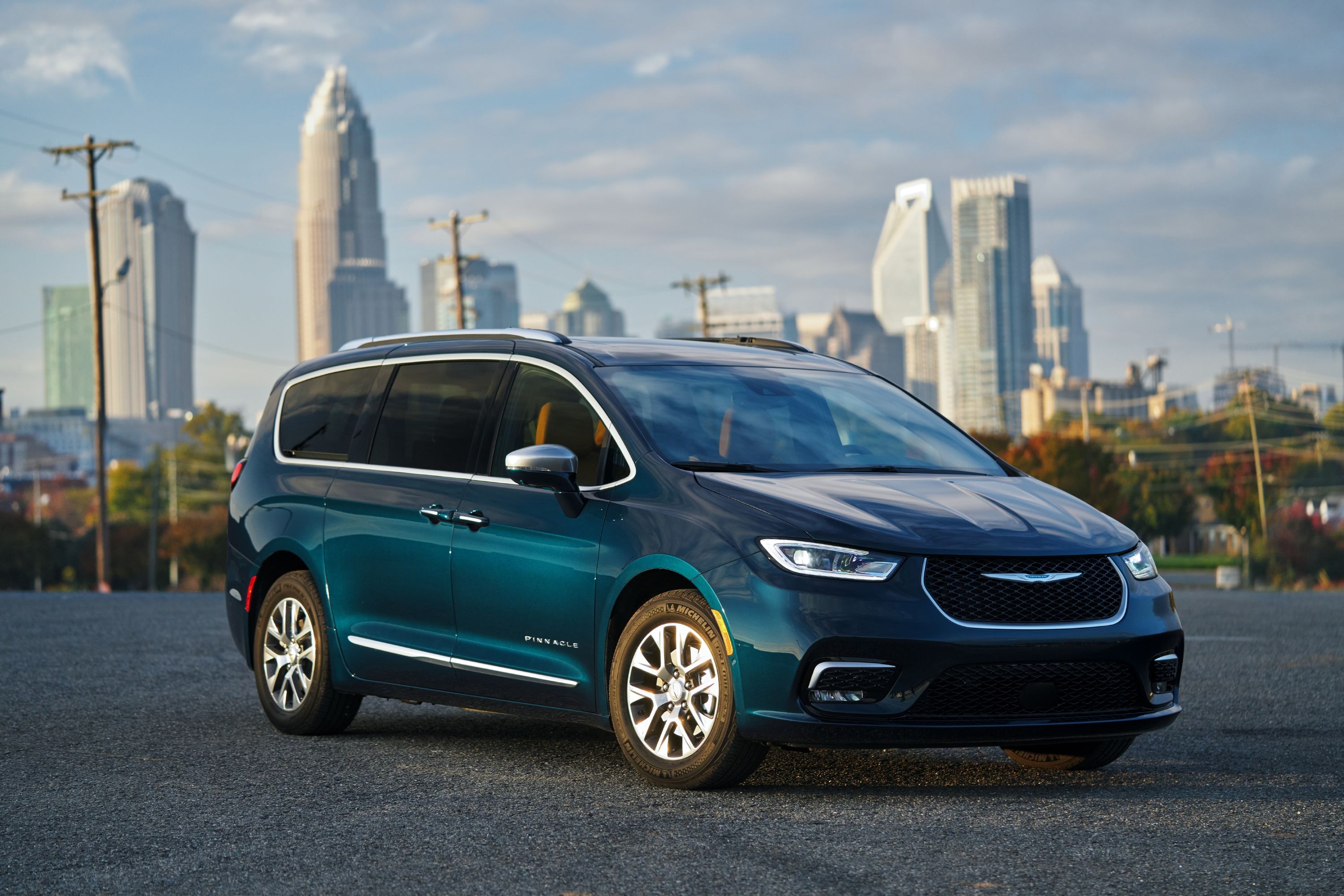
7. **Minivans Sweat the Small Stuff**
It’s often said that the devil is in the details, and for parents navigating the daily chaos of family life, those small details can make all the difference between a smooth ride and a full-blown meltdown. Many vehicles are designed with grand visions of performance or aesthetics, but sometimes, they completely miss the mark on the everyday practicalities. This oversight can quickly lead to an accumulating sense of frustration, contributing to that “bumper-to-bumper regret” where you wish the designers had just thought a little harder about *your* reality. This is precisely where minivans, with their often-understated brilliance, truly shine.
Minivans aren’t just big boxes on wheels; they are meticulously crafted environments that anticipate the unique challenges of parenting. The context highlights this beautifully: “When you drive a minivan, you realize that the designers have taken the time to make sure the little things are there.” We’re talking about features that aren’t flashy but are utterly indispensable. Think about a “trash-bag ring built into the center console facing the second row.” Genius, right? No more rogue banana peels or crumpled juice boxes floating around. It’s a simple addition that speaks volumes about understanding where the mess happens and providing a solution.
And let’s not forget the cleanliness factor. “They know life gets messy sometimes,” the context notes, and that’s an understatement of epic proportions when kids are involved. That’s why minivans like the Honda Odyssey and Chrysler Pacifica offer a “built-in vacuum cleaner.” Yes, you read that right. A vacuum, right there in the car! No more hauling out the shop-vac or attempting to use a flimsy handheld that runs out of battery after three cheerios. This is a game-changer for maintaining sanity and cleanliness, especially after a particularly enthusiastic road trip or a messy snack attack. It’s the kind of feature that makes you want to hug the design team.
Then there’s the subtle art of communication. Trying to talk to kids in the third row often devolves into shouting matches or dangerous head-turning maneuvers. The Toyota Sienna elegantly solves this with “Easy Speak,” a system that uses a microphone to project the driver’s voice through the van’s audio system. No more straining your voice or risking your neck; just clear communication with all passengers. “It’s details like these that will have you breathing a little bit easier as you get through the daily grind with children. And a not so shameful minivan.” Ultimately, the accumulation of these seemingly small, but incredibly impactful, features transforms the minivan experience from a regrettable compromise to a genuinely enjoyable, stress-reducing partnership.
So, there you have it, folks. A deep dive into the real talk about minivans, peeling back the layers of outdated stereotypes and uncovering the genuine advantages that many parents are, perhaps regrettably, overlooking. From their surprisingly capable performance and cavernous, human-friendly interiors to the sheer convenience of automatic sliding doors and the genius of integrated family-focused features, minivans are far more than just “soccer mom” chariots. They are meticulously designed, incredibly practical, and increasingly sophisticated machines built from the ground up to support the beautiful chaos of family life. The true regret isn’t buying a minivan; it’s letting old prejudices prevent you from discovering just how perfectly suited they are for the adventure of parenthood. Embrace the minivan, ditch the shame, and enjoy the ride – your family, and your sanity, will thank you.



